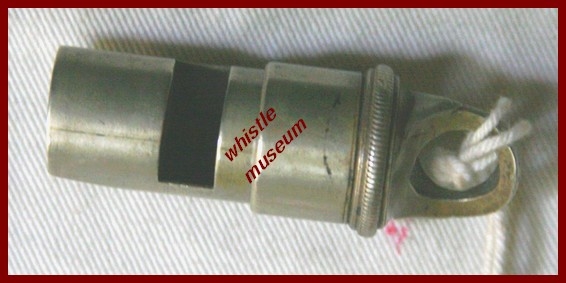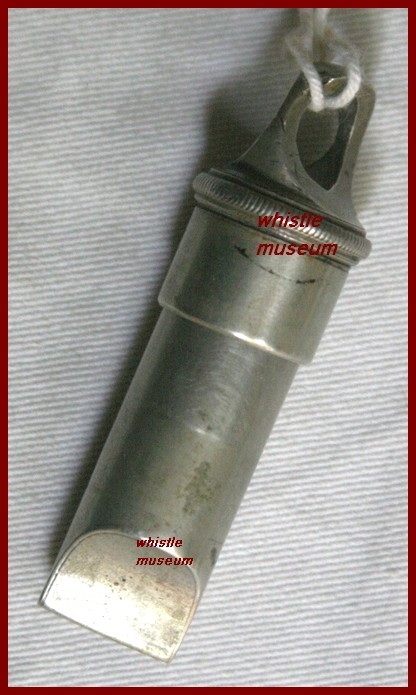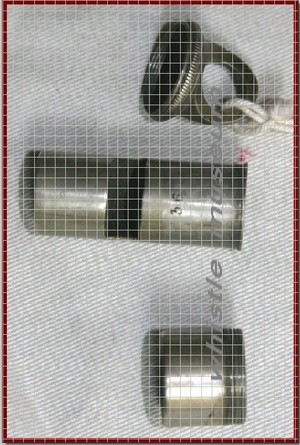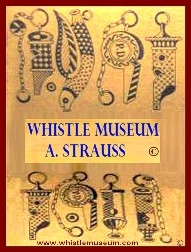Stevens & Sons Glasgow and London , see British Whistle Manufacturer History , The whistle was Probably made around 1850’s and designed by Richard Porteous. It is marked a Model # 36 on the body.
( August 5, 1802 – Jan. 3, 1881)
Closed position  It is a brilliant design since while other slide whistles of the period 1840’s and 1850’s had a sliding rod which could be moved in and out inside to determin the pitch , this design has the cap top around the body and the sliding part is out side the whistle’s body.
It is a brilliant design since while other slide whistles of the period 1840’s and 1850’s had a sliding rod which could be moved in and out inside to determin the pitch , this design has the cap top around the body and the sliding part is out side the whistle’s body.
Certainly a very innovative tricky design, of a Slide whistle, unlike most slide whistles it has a smaller register within a range of a 5th, not a full octave. C – G notes. the picture above shows its unassembled 3 parts.
The shorter part has a fillet and longer one a flare outward , so once the longer part (middle of picture) slides into the shorter part which is just a bit wider and comes to a stop at the flare, then the loop – knop top screws on top and the and by pulling the knop the slide works making the whistle shorter or longer.
The top part is cast and milled and has a screw thread on the inner part, all made of one piece.
All in all very rare and extremely well made whistle.
Made of German silver.
Whistle museum, and whistlepedia A.Strauss All rights reserved, No part of this web page is to be used without a written permission from the author.
Whistle museum, Copyright © 2008, all rights reserved.


